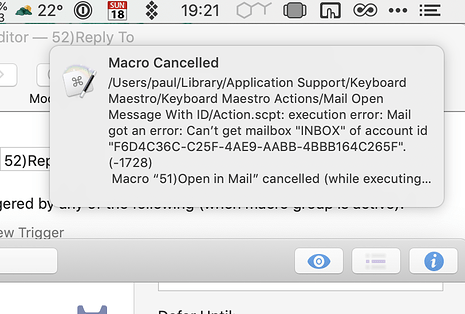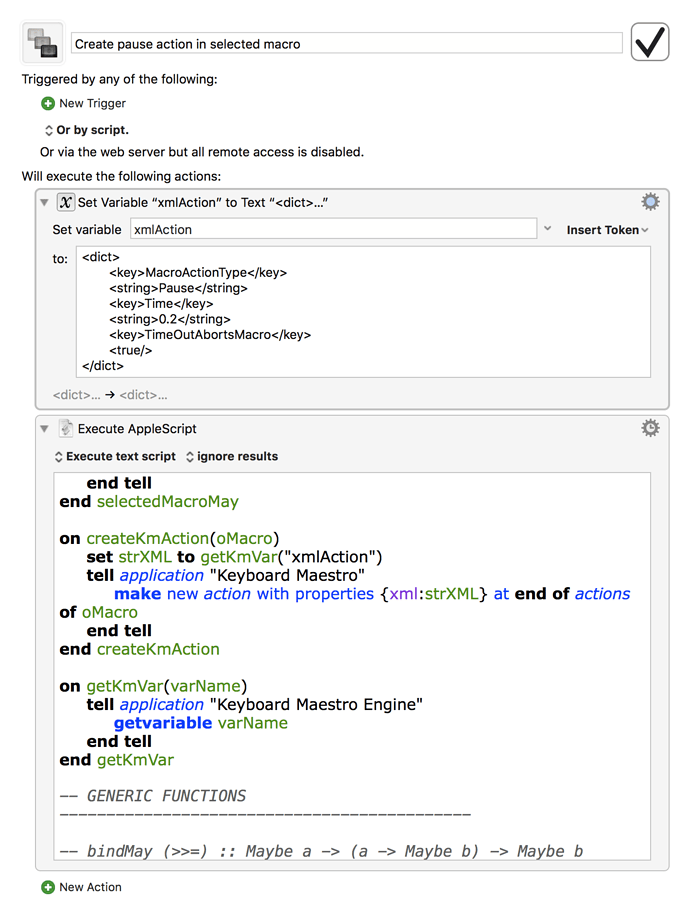

Under the triggering section of the macro, select “Or by script,” and then select “Or by Apple Script.”ģ. Select the macro in KM that you want to create a droplet for.Ģ. Instead, I created a droplet that I can simply click in my Dock. I could also easily set a keyboard shortcut to trigger that macro, but I simply don’t use it enough to warrant a keyboard shortcut. These applications could be of course automatically launched when I log into my account, but I don’t like that option because sometimes when I’m trouble shooting a problem on my computer, I don’t want all those apps launching when I’m experiencing problems. I use a macro that launches my most used applications.

While most of the automations you build in KM are triggered by either a keyboard shortcut, an application, typed string, or through the KM status menu, you can also create a droplet for any KM macro and launch it say from your Dock as you would an application or file. What is a droplet? Well, it’s sort of acts like an application. But I thought I’d illustrate it here for newer users of Mac automation, Keyboard Maestro in particular.
#Keyboard maestro make macro with action usig applescript how to
I wrote the developer of KM and he wrote back and explained in a brief sentence how to create a droplet.

I’ll write more later about what I like about Keyboard Maestro, but I thought I’d do a quick little tutorial about how to make an application droplet in KM. I’ve always thought both programs were nearly equally as good, but since I discovered and started using QuicKeys first, KM laid dormant in my Applications folder because it didn’t make since to run both Mac automation programs on my computers. Because the developers of QuicKeys have still not upgraded their application for OS X Lion, I have moved over to Keyboard Maestro.


 0 kommentar(er)
0 kommentar(er)
